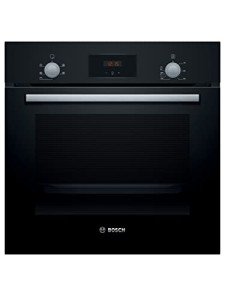How Integrated Hob And Oven Became The Top Trend In Social Media
Integrating Cooking: A Comprehensive Guide to Integrated Hobs and Ovens
In the modern kitchen, efficiency integrates perfectly with design. An integrated hob and oven system characterizes this mix, offering both functionality and visual appeal. As home cooks look for ways to improve their cooking spaces, comprehending the advantages and features of integrated hobs and ovens ends up being necessary. This short article digs into the different aspects of integrated cooking appliances, providing insights into their benefits, setup considerations, and maintenance tips.
What is an Integrated Hob and Oven?
An integrated hob and oven setup describes the style where the cooking hob (the surface on which pots and pans are positioned to prepare food) and the oven (the device used to bake, roast, and broil) are designed to fit seamlessly into kitchen cabinet systems. built in oven hob packages saves area however also improves the visual uniformity of the kitchen.
Secret Features of Integrated Hobs and Ovens
- Space Efficiency: These appliances are developed to fit within standard kitchen cabinetry, enhancing kitchen space while enabling more storage options.
- Trendy Appearance: Integrated designs offer a smooth, contemporary appearance that can raise any kitchen's aesthetic.
- Boosted Functionality: Many integrated systems include advanced functions such as induction cooking, self-cleaning ovens, and smart innovation compatibility.
- Much better Usability: Placing the hob at a suitable height and having the oven easily located below can improve cooking ergonomics.
Advantages of Integrated Hobs and Ovens
The growing choice for integrated hobs and ovens emerges from numerous associated advantages:
1. Space-Saving Design
- Integrated appliances remove the requirement for bulky standalone units.
- They permit more counter space, producing a practical work area for cooking.
2. Aesthetic Cohesion
- Integrated systems can be completed to match cabinets, providing a sleek and unified appearance.
- The kitchen can maintain a minimalist style, without visual mess.
3. Superior Functionality
- Functions like touch controls, timers, and automated cooking programs can boost the cooking experience.
- Induction hobs can provide quicker cooking times and more exact temperature level control compared to conventional gas or electric hobs.
4. Energy Efficiency
- Numerous modern integrated ovens include enhanced insulation and energy-efficient functions, decreasing energy usage.
- Induction hobs utilize energy straight in the cookware, resulting in less heat loss and faster cooking.
Installation Considerations
When thinking about an integrated hob and oven, several elements should be assessed during installation.
1. Space Measurements
- Kitchens Layout: Ensure the measurements of the offered area accommodate both the hob and oven.
- Ventilation: Adequate ventilation is vital to prevent overheating and guarantee effective operation, particularly with gas models.
2. Electrical and Gas Connections
- Power Supply: Verify that the kitchen's power supply satisfies the home appliance requirements (voltage, amperage).
- Gas Lines: For gas hobs, professional installation might be needed to ensure safety.
3. Modification and Finishes
- Choose surfaces that match kitchen interiors, such as stainless steel, glass, or perhaps custom cabinetry to conceal the appliances.
4. Availability
- Guarantee that both the hob and oven are quickly obtainable. An ergonomic setup will improve the cooking experience and make it much safer.
Integrated Hob and Oven Models
Model
Type
Secret Features
Cost Range
Bosch Series 4 HBG634BBR
Built-In
Wi-Fi connectivity, several cooking modes
₤ 1,200 – ₤ 1,500
Samsung NZ48K7570UG
Induction
Flex zone, clever technology, touch controls
₤ 1,500 – ₤ 2,000
Miele H 6260 BP
Built-In
Self-cleaning, automatic programs, smooth style
₤ 2,500 – ₤ 3,500
NEFF B57VR22N0
Multifunction
Slide&& Hide door, advanced heat circulation
₤ 2,000 – ₤ 2,500
Upkeep Tips
To make the most of the life and performance of integrated hobs and ovens, appropriate maintenance is essential:
- Regular Cleaning: Clean the hob and oven frequently to avoid accumulation from spills and food residues. Usage non-abrasive cleaners to protect surface areas.
- Inspect Seals and Gaskets: Check oven door seals to make sure efficient heating and prevent energy loss.
- Look for Damage: Regularly examine gas hose pipes, electrical cables, and connections for wear or damage. Immediate repair or replacement is vital for security.
- Follow Manufacturer's Guidelines: Adhere to the particular upkeep instructions supplied by the producer for optimum efficiency.
FAQs
1. Can I set up an integrated hob and oven myself?
- While some house owners opt for DIY setup, it is advisable to work with a professional, particularly when gas connections or electrical wiring are included.
2. Are integrated hobs and ovens energy-efficient?
- Lots of modern integrated systems are created with energy performance in mind, including thermal insulation and energy-saving modes.
3. What is the best product for an integrated hob and oven?
- Stainless steel is popular due to its resilience, ease of cleaning, and resistance to corrosion. However, glass ceramic and enamel-coated alternatives likewise offer visual appeal.
4. How do I fix common issues with integrated hobs and ovens?
- Refer to the user handbook for repairing standards. Basic problems like power failures or uneven cooking might typically be resolved through basic adjustments or resets.
An integrated hob and oven system offers a combination of functionality and style that lines up with modern-day kitchen styles. By comprehending the benefits, installation requirements, and upkeep pointers related to these appliances, homeowners can make educated choices that enhance their cooking experiences. As kitchens progress into multifunctional spaces, integrated cooking options will continue to gain appeal, shaping the future of culinary spaces.
